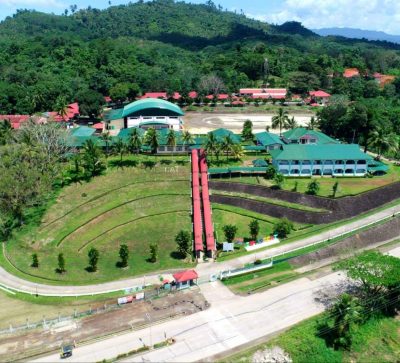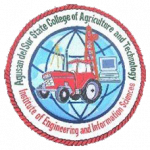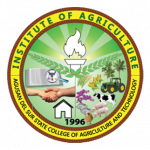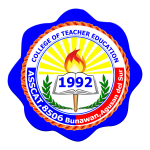ASSCAT History
The history of Agusan del Sur State College of Agriculture and Technology (ASSCAT) is a story of consistent growth and development. It chronicles the interesting evolution of hope, service, challenges and successes. It narrates the humble beginning as it struggles to where it is today. It will continue its trajectory towards continuing excellent educational services to the humanity.
Sometime in 1906, a group of Americans headed by the Honorable Dean C. Worcester visited Agusan province, surveyed the area and assessed the needs of the people. The province of Agusan was a vast hinterland, populated by Manobos and few Christians.
Realizing the need for educating the people to a better way of life, the Americans established the Manobo Industrial School (MIS) in June 1908. The school was operated for the children of Manobo “datus” from the regions of Simulao, Adgawan, Umayam, Gibung, and Wawa-Ojot. Mr. Carlson Berger was the principal. He was assisted by Mr. and Mrs. Joseph Kempt, Mr. Liberato Fortun, and Mr. Ciriaco Viajar as members of the teaching force. The school was located along the Simulao River, opposite the poblacion of the municipality of Bunawan. On June 24, 1908, Executive Order No. 52 was issued by the Governor-General William Cameron Forbes and granted the school site with a reserved area of 41.9089 hectares (Parcel 1) and .1764 hectares (Parcel 2). Later, the Manobo Industrial School was converted into Manobo Farm School (MFS) with the purpose to improve the farming practices of the natives. A Grade V class was opened in school year 1915-1916 with Mr. Ellsworth Maxwell as Principal. The other teachers were Mr. George L. Broxholm, Mr. Cornelio del Rosario, and Miss Dedicacion del Rosario. A limited number of pupil coming from the municipal district schools of Cuevas, Trento, Libertad, Veruela, La Paz, Loreto, Prosperidad, Talacogon, San Luis, Esperanza and Lianga, Surigao were accommodated in the school dormitory with free clothing, beddings, and subsistence. The other pupils lived in Bunawan with their parents or relatives.
By 1926, Manobo Farm School (MFS) was converted into Bunawan Agricultural School (BAS). First year high school was offered in school year 1927-1928; second year in school year 1928-1929; third year in school year 1929-1920; and fourth year in school year 1930-1931. The additional site of 280.8131 hectares was reserved for the BAS under Proclamation No. 677 issued by Governor-General Frank Murphy on April 2, 1934. BAS developed steadily until enrollment reached 400 students. Unfortunately, World War II intervened, and the school was temporarily closed.
The Filipino Principals who worked for the school until the outbreak of the World War II were the following:
Table 1. Name of Principals and their Terms of Office
| Name | Year | Length of Service |
| Mr. Francisco Fernan | 1923-1926 | 3 years |
| Mr. Manuel Flojo | 1926-1929 | 3 years |
| Mr. Acuña | 1929-1933 | 4 years |
| Mr. Anastacio Limbo | 1933-1938 | 5 years |
| Mr. Obias | 1938-1941 | 3 years |
After the World War II, the provincial government transferred the school to Ampayon, Butuan City, leaving Bunawan without a high school for three (3) years. Fortunately, the late Congressman Marcos M. Calo, a native of Agusan worked for the return of the Bunawan Agricultural School (BAS) and succeeded when Republic Act (R.A.) No. 301 was passed in Congress and approved by His Excellency Elpidio Quirino on June 17, 1948. It authorized the creation of Bunawan Junior Agricultural High School (BJAHS) and was formally opened in July 1948 at the former school site in Bunawan.
With re-establishment of the high School in Bunawan, parents began to enroll their children at the Bunawan Junior Agricultural High School (BJAHS) instead in Mampising, Davao or in Ampayon,Butuan City. It was Mr. Raymundo Curato, the Principal of Bunawan District, who was designated by Mr. Mariano Manaligod, Division Superintendent of Schools for Agusan to open the school as Farm Manager; and Mr. Enrique Paller, the Farm Manager of the School in Ampayon acted as Officer-in-Charge (OIC) of BJAHS until Mr. Jose F. Luna came as Principal.
Mr. Luna arrived in September, 1948 and immediately moved to provide facilities, books, equipment, working animals, food and other needs of the school until his replacement by Mr. Domingo C. Gabertan on August 4, 1949. Mr. Domingo C. Gabertan decided to relocate the school campus on higher ground due to the yearly flooding on the old site. The present site now along the Agusan-Davao National Highway (Daang Maharlika). The RA No. 948 was approved on June 20, 1953 converting the school into Bunawan National Agricultural School (BUNAS). The construction of structure was realized such as five (5) ICA-NEC (FOA-Philcusa) buildings, Vocational Agricultural Buildings, granary and the concrete water tower. Mr. Gabertan, however, was transferred to Negros Occidental National Agricultural School in Kabankalan, Negros Occidental on August 16, 1956, after he was sent to the United States for one year advanced studies. The faculty and students held their classes in the new site but they continued to stay at the old site which was about 2 kilometers until the old Girls’ Dormitory was finished in 1958.
Mr. Felipe C. Galeon succeeded Mr. Gabertan as Principal of BUNAS. It was also during his time that additional buildings were constructed like the Girl’s dormitory, Social Hall, and Practice House, until his promotion to the General Office, Manila in the later part of 1960. Following Mr. Galeon as Principal of BUNAS was Mr. Perfecto C. Boncato, who was transferred from Bilar Rural High School, Bilar, Bohol.
During his term, Mr. Perfecto C. Boncato was able to construct the Related Subjects Building, a Home Management Building and laid out the school playground. When Mr. Boncato left in 1966, Mr. Arturo Cubangbang, Mr. Santiago T. Medrano and Mr. Federico S. Zamora were temporarily designated as school’s Officers-in-Charge one at a time until the detail of Mr. Gregorio C. Alava, Principal of Davao National Regional Agricultural School to BUNAS in school year 1966-1967. Mr. Alava was later replaced by Mr. Felipe C. Badua who was finally promoted as Principal of the school effective on June 23, 1967, and eventually as Vocational School Administrator I on July 1, 1974 until his retirement on May 27, 1985.
The Republic Act No. 5917, sponsored by former Congressman Jose C. Aquino of Agusan, converted the Bunawan National Agricultural School (BUNAS) into Southern Agusan National Agricultural College (SANAC) on June 21, 1969. Congressman Democrito O. Plaza during SY 1969-70 endorsed for the inclusion in the General Appropriations Act the funding requirements of the operations of SANAC.
The Circular No. 8 issued by the defunct Bureau of Vocational Education (BE) on October 4, 1974 authorized the school to offer the revised two-year Post-Secondary Agricultural Technician curriculum starting the second semester, school year 1974-1975. This was the result of the effort made by Gov. Valentina G. Plaza in inviting a team from BE. One hundred thirty three (133) students graduated from this course in five (5) batches until it was phased out in school year 1986-1987.
The Central Mindanao University (CMU) Off-Campus Institute at SANAC started offering the first year of the 4-year general collegiate academic course during the first semester of SY 1979-1980 with selected members of the faculty who were trained at CMU, Musuan, Bukidnon, for two summers, acting as affiliate instructors. The following year, second year subjects were offered. After the second, the CMU-off campus students were supposed to proceed to the CMU Main Campus for their third and fourth years, or to other colleges/universities of their choice. This program was in operation at SANAC for four (4) years until it was suspended at the beginning of SY 1983-1984 because the number of students who intend to enroll did not reach the desired number as required by school authorities.
On June 23, 1987, DECS Order No. 66, series of 1987 was issued granting authority to the school to operate the ladder-type Bachelor of Agricultural Technology (B.A.T.) course. The first two years of this course admitted both NCEE and non-NCEE qualifiers, leading to the Diploma in Agricultural Technology (D.A.T.), but only NCEE qualifiers can proceed to the third and fourth years leading to the Bachelor of Agricultural Technology (B.A.T) degree.
Mr. Nicasio T. Domingo Jr., who replaced Mr. Badua as Vocational School Administrator, exerted efforts to increase students’ achievement through upgrading the quality of instruction in different subjects, curriculum improvements, faculty and staff development; and acquisition of some needed field, laboratory, and library facilities. In school year 1989-1990, there was a 100% qualification in the NCEE among the fourth year students who took the examination and the school also produced its first batch of B.A.T. graduates, a significant milestone in this history of the college.
Mr. Nicasio T. Domingo was detailed in the DECS Regional Office, Region X, Cagayan de Oro City effective September 17, 1990, and Mrs. Ramona S. Nono, Administrative Officer II, was designated as Officer-in-Charge from the September 1990 to February 5, 1991.
On February 6, 1991, Mr. Cristeto Ra. Abrea, Vocational School Principal I of Kinoguitan National Agricultural School (KNAS), Kinoguitan, Misamis Oriental was designated Officer-in-charge of SANAC.
Starting the Academic Year 1992-93, through DECS Order No. 88 s. 1992, two (2) academic programs were added namely; Bachelor of Secondary Education (BSEd) major in Technology and Home Economics, and the Bachelor of Elementary Education (BEEd) with concentration in Work Education and with the initial offering of Laboratory Grade School.
On the same year, Congressman Ceferino S. Paredes Jr. sponsored Batas Pambansa House Bill No. 1432 and supported by the Senate Bill No. 1690 of Senator Edgardo J. Angara the conversion of SANAC into a state college. On March 1, 1995, His Excellency President Fidel V. Ramos signed RA No. 7932 converting SANAC into Agusan del Sur State College of Agriculture and Technology (ASSCAT). More degree programs were offered such as Diploma in Inland Fishery Technology (DIFT) leading to Bachelor in Inland Fishery Technology (BIFT), Bachelor of Science in Agro-Forestry (BSAF), and Bachelor of Science in Agribusiness and Information Technology (BSAIT).
Moreover, the DAT-BAT program was strengthen when ASSCAT was one of the four (4) identified institutions in Mindanao which availed the support and assistance from the Australian Agency for International Development (AusAID) and Education Development Projects Implementing Task Force (EDPITAF). The project gained bilateral funding from the Philippine-Australian Agricultural Technology Education Project (PA-AGRITECH) from 1996 to 2000. The 60 million pesos grant-in-aid for ASSCAT was in the form of refurbished theory room, library, farm mechanics shop, laboratories for science, crop and food processing, nursery, and Community Outreach Center (COC). Other facilities were also acquired such as computers, typewriters, overhead-projector, photocopier, recent edition of library books, course materials and other learning references. The faculty, staff and technical support also availed of the in-service training and seminars. Mr. Cristeto Ra. Abrea served as Office In-Charge of the Office of the President from 1995-1997 and became the first installed ASSCAT President on January 1997. Upon his retirement on January 2001, Dr. Roberto N. Padua, CHED Commissioner assumed as Chair of the Management Committee effective January 13, 2001 until August 22, 2001 while, Mr. Bernardino Z. Ente Jr., MPA served as OIC President from August 22, 2001 to February 13, 2002. During their terms, the Academic Development and Strategic Plan for 2001-2005 was approved by the Board of Trustees which served as blueprint for ASSCAT ascension to Agro-industrial Tourism University Park. During the academic year 2001-2002, numerous programs were offered such as: Bachelor of Science in Biology, Bachelor of Science in Chemistry, BSE major in Biology, Chemistry, Mathematics and Technology and Livelihood Education, Bachelor of Science in Agricultural Engineering (BSAE), Bachelor of Science in Electronics and Communications Engineering (BSECE), Bachelor of Science in Mechanical Engineering, and Bachelor of Science in Information Technology (BSIT). Further, a purposive faculty and staff development program was planned to meet the academic requirements of the College. Meanwhile, the vigorous upgrading and improvement of facilities was pursued namely; major refurbishment of the Administration building, renovation of Engineering building, construction of Paredes building, establishment of Zoological-Botanical Garden, and acquisition of laboratory equipment and apparatuses.
The second ASSCAT President, Dr. Doroteo E. Jaquias served the College from February 13, 2002 – October 24, 2011, for two (2) terms. During his leadership, he blazed the trail towards excellence, quality and access. The program offerings were added with Bachelor of Science in Agriculture major in Agronomy, Animal Science, and Horticulture. The complete curricular years of BS in Agriculture major in Horticulture in extension class in Loreto, Agusan del Sur and the Bachelor of Agricultural Technology at Surigao del Norte College of Agriculture and Technology (SNCAT) at Magpayang, Mainit, Surigao del Norte were offered. However, due to inadequacy and limitation of resources the Arts and Sciences programs and the elementary laboratory school were rationalized. It is also during his term in year 2003 that the College was recognized as member to the Accrediting Agency of Chartered Colleges and Universities of the Philippines (AACCUP) Inc. On December 6-9, 2005, the College undergone AACCUP formal survey on its three (3) programs. After three (3) years, the following programs were accredited to Level 1 on December 10-12, 2008 namely; BS in Agriculture major in Horticulture, BS Agribusiness, BS Agroforestry, BS in Agricultural Engineering and BS Information Technology. As of December 2010, the three (3) program offerings of the College earned a Level 2 accreditation status while the six (6) have a Level 1 status. In the aspect of infrastructure, Dr. Jaquias also implemented numerous construction such as completion of the Audio-Visual Center, circumferential road, comfort room in Basic Education, and Administration building (phase 1). The College was also recognized as Most Enterprising SUC in Caraga region because of the robust income generating projects of the College which eventually led to a national recognition from CHED as the National University/College Awardee (NUCA) in the Caraga region on August 14, 2009 pursuant to Commission enbanc Resolution No. 221-2009. The College also retained the institutional position as SUC Level II evaluated by the CHED and the DBM in year 2017. The research and extension functions likewise demonstrated prominence by considerable number of researches conducted, presented and published which eventually utilized by the community beneficiaries. While the production function flourished as the agricultural projects continued to generate revenues that augment the College’s funding requirements.
On October 25, 2011, Dr. Juarlito V. Garcines was officially appointed as 3rd ASSCAT President. During his presidency in 2012 marked the opening of the graduate programs namely; Master of Science in Agriculture majors in Agronomy, Animal Science and Horticulture pursuant to BOT Resolution No. 24, s. 2012. Further, the two-year Diploma in Fishery Technology (DIFT) and the Teacher’s Compliance Certificate (TCC) were offered per BOT Resolution No. 48, s. 2013. In 2017, the offering of Arts and Sciences programs (Bachelor of Arts Major in English Language, Bachelor of Science in Biology and Bachelor of Science in Applied Mathematics) were re-offer which was duly approved pursuant to BOT Resolution No. 13 series of 2017. On July 10, 2015 by virtue of BOT Resolution No. 38, series of 2015 the Memorandum of Agreement on management of the External Studies Center in Trento, Agusan del Sur was transferred from Bukidnon State University to the ASSCAT.
As a strategy in improving the quality of education, all programs of the College are recognized by the AACCUP as Level III-Phase I in December 2015. In the effort to continue the pursuit for quality and excellence in the delivery of educational services, the College periodically submits to accreditation hence, as of 2017, the updated status and validity of accreditation is shown on the Table 2 in the succeeding page.
Table 2. Accreditation Status and Validity
| Programs | Level (Accreditation Status) | Date of Validity |
| Master of Science in Agronomy | Level II Re-accredited | August 1, 2019–July 31, 2023 |
| Master of Science in Animal Science | Level II Re-accredited | August 1, 2019–July 31, 2023 |
| Master of Science in Horticulture | Level II Re-accredited | August 1, 2019–July 31, 2023 |
| Bachelor of Science in Agriculture | Level III Re-accredited | November 1, 2018-October 31, 2022 |
| Bachelor of Science in Agricultural Technology | Level III Re-accredited | November 1, 2018-October 31, 2022 |
| Bachelor of Science in Agribusiness | Level III Re-accredited | November 1, 2018-October 31, 2022 |
| Bachelor of Science in Agroforestry | Level III Re-accredited | November 1, 2018-October 31, 2022 |
| Bachelor in Secondary Education | Level III Re-accredited | August 16, 2018-August 15, 2022 |
| Bachelor of Elementary Education | Level III Re-accredited | August 16, 2018-August 15, 2022 |
| Bachelor of Science in Electronics Communication Engineering | Level II Re-accredited | August 2019-July 2020 |
| Bachelor of Science in Agricultural Engineering | Level III Re-accredited | December 16, 2020-December 15, 2024 |
| Bachelor of Science in Information Technology | Level III Re-accredited | December 16, 2020-December 15, 2024 |
The faculty and staff development is a primordial importance thus, the NBC 461 (2nd to 5th cycle) were implemented which was enjoyed by the faculty receiving the compensation that corresponds to their academic rank. In response to the CHED K to 12 program, the College sent 74 faculty and staff to advanced studies in NCR, Visayas and Mindanao islands. To complement the existing workforce, there were 48 faculty positions given to ASSCAT in 2017.
During his reign, the allocation for Capital Outlay from the national budget was only provided in 2013 at P3.9M, in 2014 at P5.3M, in 2015 at P13.9, in 2016 at P39.6, in 2016 at P98M, in 2017 at P244.2M, in 2018 at P124M and in 2019 at P55.5M. It can be gleaned that the national budget of the ASSCAT during the term of Dr. Garcines was materially increasing especially in the Capital Outlay which led to the massive construction, rehabilitation and development of physical facilities and structures. Among the projects are: covered walk around the campus, footbridge connecting Administration building and the QMS Center, Science and Technology Laboratory, Sports and Socio-Cultural Center, students centers, rehabilitation of TLE building, 12-classroom Agriculture building, 18-classroom Engineering building, farm-to-market road, vermicompost building, Corn Processing Center, Vegetable Processing Center, completion of Administration building, Girls’ Dormitory, Students Service Center, road network from Maharlika hi-way to Engineering building, RDE Center, road network at the RDE, water system, e-library building, DRRM center, ICT complex with e-library, track and field, acquisition of three (3) units brand new vehicles, water system, and one-room academic building. The accessing of external funds was strengthened where the College partnered with the Department of Agriculture, Department of Science and Technology, other educational institutions boosting the research and infrastructure projects.
It was also a great pride and honor of ASSCAT to produce topnotchers in the Licensure Examination for Teachers where Ms. Jennifer C. Burlado landed at top 5 in year 2017 and Ms. Jeanette F. Francisco and Mr. Mark John Martinez as Top 4 and Top 10, respectively in 2018 exam.
One remarkable milestone is the awarding of the AJA Registrars, Inc. the ISO Registration Certificate to ASSCAT’s quality management system as ISO 9001:2015 Certified on December 18, 2018. Another is the institutional level of the College as SUC Level III pursuant to CHED Memorandum Order No. 12, series of 2016. On September 15, 2016, the College is received an award from the Civil Service Commission as Maturity Level 2 in Recruitment Selection and Placement, and Performance Management System. Further, a much-waited Special Patent No. SP-SCH-AGS-0037 and Original Certificate of Title No. 2018000564 was granted and released by the DENR to ASSCAT on November 9, 2017 for its 884,548 sq.m. land area. The title of the lowland area is still on process.
From May 2012 to July 2016, Dr. Garcines was appointed by Dr. Ricardo E. Rotoras, PASUC President as Chair of the PASUC Caraga. As GAD champion, Dr. Garcines manifested his support to the activities and programs of Gender and Development by institutionalizing and mainstreaming it to all system, policies and operations of the College. Upon unanimous decision, Dr. Garcines was reappointed on his second term as College President commencing on October 25, 2015 until October 24, 2019, pursuant to BOT Resolution No. 56, series of 2015 during the 92nd BOT Special Meeting at CHED Central Office, Quezon City. Two years after his reappointment, he initiated also the conversion of the ASSCAT into a University by preparing the CHED and other legal requirements. As of to date, the application for University status is at the House of Senate level.
Currently, the College is implementing the continual improvement in all its processes, systems, resources and structure to provide to the stakeholders its deliverables in terms of quality, accessible and excellent tertiary education and services for the students, personnel and community.





